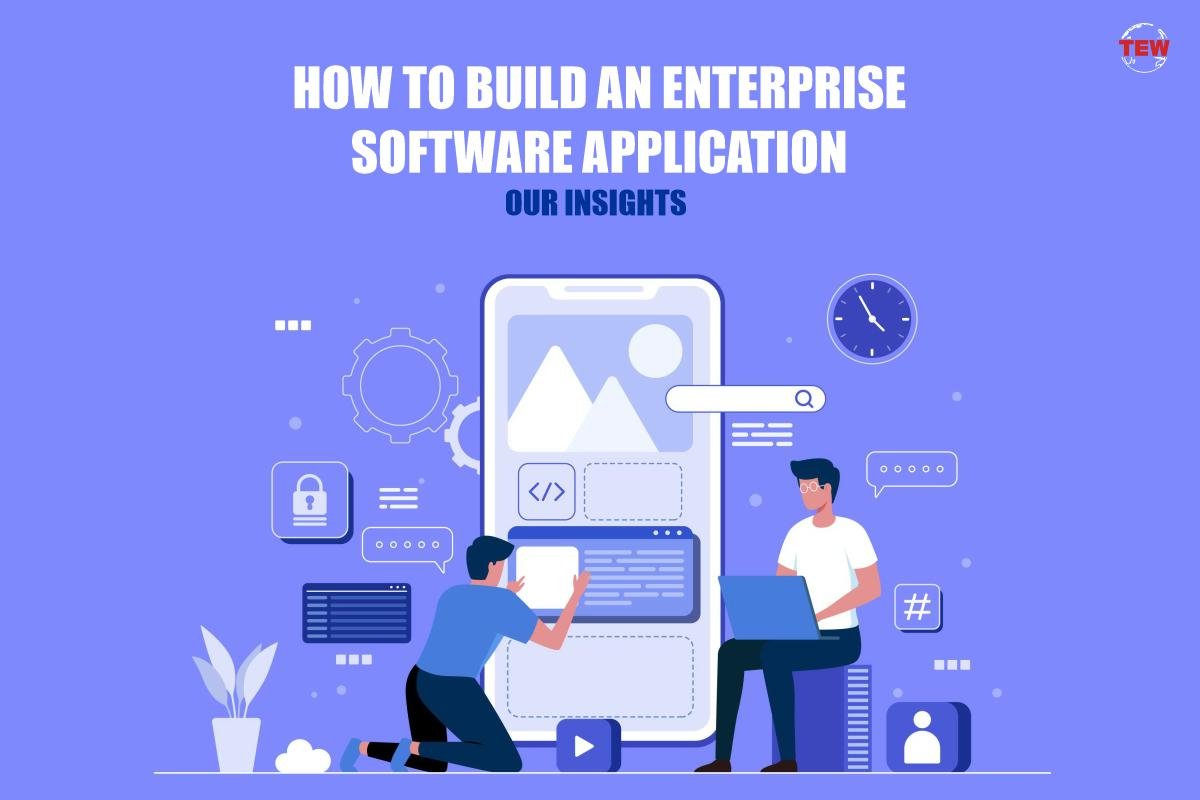Many companies of various levels are considering developing their own enterprise software. So from this article you will learn some tips to Build an Enterprise Software Application. The latter is convenient for automating workflows, storing and searching for data, optimizing, and solving other business problems. Thus, according to IndustryARC research by 2025 the total enterprise software market will grow to 545 million. But how to properly approach the issue of their creation remains an unresolved issue for many. We have prepared ideas that will help in the development of reliable enterprise software.
5 Tips to Build an Enterprise Software Application
Suppose you need to improve an existing application. In that case, it is enough to understand what does not suit you, write down the terms of reference, add new necessary functions and send all this to a team of qualified developers. And before creating new software, you need to go through many stages.
No. 1. Decide on the type of enterprise software
There are 6 main types of enterprise software:
- For management, this is the main assistant in organizing the work of several business processes at once. They are also divided into several types, for example, CRM, HR and ERP. Software is also distinguished by the level where management is required, for example, resources, personnel, clients, content, business processes, etc. Any of these applications will allow you to customize and optimize work, most importantly, understand at what level this needs to be done.
- For collaboration – ideal if you have several offices in different cities and countries. With it, you can open access to some data at different levels of the hierarchy. In addition, employees from different countries can use it to work together at any time.
- For automation – suitable if you need to optimize, automate and standardize any business processes within the company without the need to work manually.
- For analytics – designed to work with big data and conduct analytical processes.
- For data storage – they make it possible to systematize all company data and build them according to standards and regulations.
- For security – maintaining a high level of security remains the most important task today.
Make your choice and move on.
No. 2. Choose one of the working trends
Every year there are new trends in different areas of business that must satisfy rapidly changing rules and laws.
Several decent options are available today:
- Microservices is a type of software that implements a whole range of services interconnected with each other, each of which has its own admin panel for solving problems. They are implemented using different languages, help to increase productivity, and are convenient for the work of several departments in one company. But such applications will not be able to scale for a large enterprise.
- Serverless architecture – it also carries many microservers, but they are connected to a cloud provider, which simplifies management processes. This view can already be scaled.
- Automated testing is a way to simplify the process of conducting tests at different stages of software development.
- Artificial intelligence is the most efficient way to solve all business operations.
- Big data is an assistant in dealing with the huge flow of information that even small companies face every day. They will allow you to quickly solve problems by finding the right data, analytics, automation, and optimization of workflows.
- Working with DevOps – specialists help to solve all issues related to the organization of work processes, problem-solving, and interaction between different departments and their employees.
Decide which option suits you best.
No. 3. Analyze workflows
Try to make a deep analysis of all business operations in order to understand which processes require optimization.
No. 4. Create a strategy
When you have decided on the type of enterprise application, create a plan for further actions and describe:
- suitable trends;
- basic goals;
- terms of implementation;
- budget;
- necessary functions;
- appearance;
- software requirements.
This is the minimum strategy plan, you can add additional points. Discuss all points together with other team members whom you consider responsible, perhaps they will help with a clearer definition of the entire structure. When the strategy is created, it is necessary to prepare terms of reference for developers. The more detailed you write down each item, the better the result will be. Before a team of specialists starts development, be sure to check whether all the tasks are clear to them.
No. 5. Choose a reliable team
If your team has developers who can independently implement the entire life cycle of an enterprise application, this is great, but if not, it is important to find real professionals.
It is desirable to find a team that is able to implement each stage of the software and includes: a manager, an analyst, DevOps, a tester, and several programmers.
Conclusion
We’ve covered the basic roadmap for building enterprise software. Use it to achieve your goals, and don’t be afraid to add your own points to it depending on the specifics of your company.




